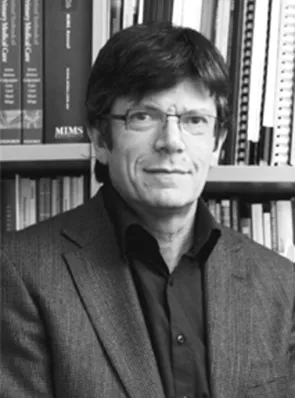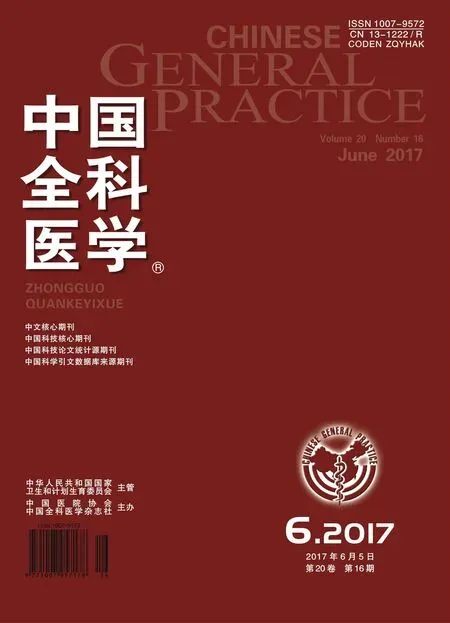《The Medical Republic》案例分享
——诊断:有意还是无意的偏差?
Leon Piterman,周海铃(译),黄文静(译),杨 辉(译)
·世界全科医学工作瞭望·
《The Medical Republic》案例分享
——诊断:有意还是无意的偏差?
Leon Piterman1,周海铃(译)2,黄文静(译)2,杨 辉(译)1
全科医生;诊断;偏差
自古以来,我们的临床方法就是病史采集、身体检查和实验室检查这三件事。
做这三件事的目的,是为了获得一个正确的诊断,并据此推断出相应的预后,提出对治疗或管理的建议。
老师教给我们的是,做诊断的关键是要“仔细(careful)” 地采集病史,仅通过病史采集就可以对70%的问题做出诊断。我们还知道,“仔细”这个词, 对经验丰富的医生、专家、初级医生和医学生来说,是有不同的含义的。
经验丰富的医生(包括全科医师和专科医师),会把他们的疑问聚焦在关键的线索上。医学生和初级医生则采取系统的病史采集方法,也许他们还不能区分出每一种现有症状的相对重要程度。在这些情况下,依赖于实验室检查(往往这些实验室检查是不必要的)似乎主宰了诊断过程。
当我在门诊做神经科学员的时候,我的导师习惯上先看所有的新患者,并采集病史。在他把这些患者转给我之前,他不做体格检查,也不安排实验室检查。
我的导师先写下他的诊断,然后让我做第2轮病史采集,并做体格检查和实验室检查。然后,让我把他事先写的诊断与我的判断做核对。我导师的诊断从来没有错误!
阅历,是对个人启发的奖励。导师以前听过和看过所有这些病,这也就提高了他做的病史采集能做出阳性预测价值。在全科诊疗中,当我们想要走捷径的时候,也会采取同样的策略。我们也会从以往看过患者的知识中获取信息,并受这些经验的影响;我们还会考虑到当地主要疾病的流行病学,特别是疾病在不同季节的变化趋势。
所以,诊断是个科学过程吗?它没有偏差吗?
下面这些案例表明,诊断可以是任何东西,但不是科学。科学是无偏的,而我们不是在无偏的领域里工作。我们带着自己的偏差,有的时候还带着自己的偏见,登上诊断的舞台。
比尔的故事
比尔,68岁,20多年来一直在我们诊所看病。他多血质的面庞上,带着几处伤痕。枯瘦的双手和肥胖的身躯,让我们看到的是他与酒精的战斗,而掩盖了他曾在越南战争与恶魔战斗时受到的伤害。
在过去的十年中,他患上了高血压、2型糖尿病和脂肪肝,并遭受了几次痛风发作。很久以前他的婚姻解体了,孩子们都不跟他联系了。酒吧和老虎机成了他无聊的日常生活的唯一安慰。
在某个繁忙的星期一上午,接诊员在已经预约好的患者之间把比尔加了进来。他一瘸一拐地走进我的诊室,满面胡须,表情痛苦。他一只脚上穿着松松垮垮的拖鞋,另一只脚上穿着破破烂烂的旧鞋子。
我感到没有必要采集他的病史了。诊断看起来是显而易见的。
“嗨,比尔,坐下。看来你的痛风又发作了”,我说。
“不是的,医生”,他回答说,“是我修理烧烤炉的时候,把煤气罐砸到脚上了。”
埃塞尔的故事
埃塞尔是一个58岁的脆弱的糖尿病患者。我接到了正在探望她的女儿(简)的电话,请求紧急家庭访视,理由是她母亲出现了“低血糖”,而她喂不进任何糖或果汁。
我赶到埃塞尔家,发现她瘫倒在厨房的椅子上,大汗淋漓和半昏迷状态。我静脉推注了葡萄糖和肌肉注射了胰高血糖素,同时安排急救车把埃塞尔送到当地的急诊中心。
当我走进她狭小而且单一朝向的小木屋时,起居室和厨房的杂乱情形把我吓了一跳。房间里到处堆着盛满树叶和树枝的箱子。这就像埃塞尔一直在收集花园垃圾,并储藏在她家里。
相对于解开埃塞尔家里的乱麻而言,把她的血糖恢复正常看起来要容易的多。我不得不向她的女儿表达我对埃塞尔的总体生活、身体和心理状况,以及她自我照顾能力的担心。
简很礼貌地告诉我,埃塞尔是一位艺术家。她用树叶、树枝和其他植物作为她作品的一部分。然后她递给我一个请柬,那是埃塞尔3周后在一个当地画廊的个人艺术展,简问我是否认为埃塞尔的健康能容许她完成艺术展 。
通过这2个例子,我很快认识到,事情并不总是他们看起来的样子。
医学是一个观察性科学,不过,上面这两种观察都带有偏差。
在比尔的例子中,我受到他既往史的影响,还没采集一点点病史就快速下诊断了。
通常的情形是,患者走进诊室没多久,我们就已经有了对患者臆测的诊断假设。毕竟,我们使用了自己全部的观察能力;但是,在没有进一步证据提高假设存在的可能性之前,诊断假设会持续存在的。
在埃塞尔的例子中,我对她生活环境的偏性看法,让我过快地跳跃到给她下一个社会诊断。
观察是重要的,但是,观察的同时要有细心的倾听和谨慎的反应。
我从我的教训中得到了学习。
译者注:多血质面容:在全科医学看病过程中,首先观察到的是患者的面容。面容或表情,是与特定疾病或健康问题有关系的。多血质面容,常见于Cushing综合征、单纯红细胞增多症、长期酗酒、慢性肺心病、类癌综合征、上腔静脉综合征。
志谢:特别感谢原文出版者《The Medical Republic》同意将此文编译后刊登于《中国全科医学》。
Our time-honoured clinical method consists of history taking,physical examination and investigation.
The purpose of undertaking this exercise is to achieve a correct diagnosis to which we attach a prognosis and advise treatment or management.
We are taught that "careful" history taking is key to diagnosis and that 70% of diagnoses can be based on history alone.We also know that "careful" has a different meaning to experienced practitioners,specialists,junior doctors and medical students.
Experienced practitioners,both GPs and specialists,focus their questioning on highly critical cues.Medical students and junior doctors take a systematic approach to history taking and may not differentiate the weight of each presenting symptom.Reliance on investigations(often unnecessary) seems to dominate the diagnostic process in these circumstances.
When I was a neurology registrar in outpatients my boss was in the habit of seeing all new patients first and taking a history,but not undertaking a physical examination or arranging tests before he had passed them over to me.
He then wrote down the diagnosis and asked me to check once I had completed a second round of history-taking as well as physical examination and investigations.He was never wrong.
Past experience,an appreciation of personal heuristics-he had heard and seen it all before-enhanced the positive predictive value of his history taking.In general practice,while we may appear to take shortcuts,we adopt similar practices.We are also informed and influenced by our past knowledge of the patient and the prevailing local epidemiology of diseases,particularly seasonal variations.
So is the diagnostic process scientific? Is it free of bias?
The following cases tend to suggest that it is anything but scientific.We do not operate in a bias-free zone.We bring our biases,and occasionally our prejudices,into the diagnostic arena.
BILL′S STORY
Bill,aged 68,had been attending our clinic for more than 20 years.His plethoric facial appearance,complemented by a number of scars,his knobbly hands and truncal obesity bore witness to his battles with alcohol,not to mention battles with the demons that his service in Vietnam had inflicted on him.
Over the past decade he had developed hypertension,type 2 diabetes and fatty liver and suffered several attacks of gout.His marriage had failed long ago,his children were estranged,and the pub and the pokies provided the only relief from the boredom of the daily routine.
On this occasion Bill was squeezed in as an extra on a busy Monday morning.He limped into my consulting room,unshaven and distressed.He wore a loose fitting slipper on one foot and a worn-out shoe on the other.
I didn′t feel the need to take history.The diagnosis seemed quite obvious.
"Hi Bill,take a seat.So you have another attack of gout," I remarked.
"No doc," he replied,"I dropped a full gas bottle on my foot when I was trying to fix the BBQ."
ETHEL′S STORY
Ethel was a 58-year-old brittle diabetic.I had a call from her visiting daughter,Jane,requesting an urgent home visit as her mother was having a "hypo" and she could not get any sweets or juice into her.
I rushed to Ethel′s home to find her slumped in a chair in the kitchen,sweaty and semiconscious.I administered some IV glucose and IM glucagon and arranged an ambulance to take Ethel to the local ED.
What struck me as I walked into the small,single-fronted timber home was the chaotic nature of the living room and the kitchen.There were boxes of leaves and tree branches strewn everywhere.It was as if Ethel had been collecting garden refuse and storing it in her home.
Restoring her blood sugar to normal seemed easy compared with unravelling the mess in her home.I felt compelled to express my concern to her daughter about Ethel′s general wellbeing,physical and mental,and her ability to cope on her own.
Jane politely informed me that Ethel was an artist and used leaves,branches and other plants as part of her artwork.She then handed me an invitation to an exhibition that Ethel was having at a local gallery in three weeks′ time and asked if I thought Ethel would be fit enough to make it.
In both cases I very quickly learned that things are not always what they seem.
Medicine is an observational science but observations in both instances were coloured by bias.
In Bill′s case his past history drew me to a rapid fire diagnosis in the absence of taking a skerrick of history.
It is not uncommon to postulate diagnostic hypotheses as soon as the patient walks in the room.After all we use all of our powers of observation.But hypotheses should remain as such until further evidence raises their level of probability.
In Ethel′s case I jumped too quickly to a social diagnosis informed by a biased view of her environment.
Observation is important but looking should be accompanied by careful listening and cautious responding.
I learned my lesson.
(本文编辑:崔沙沙)
Diagnosis:Unconscious or Conscious Bias?
General practitioners;Diagnosis;Uncertainty
注:本文首次刊登于《The Medical Republic》
R 197
A
10.3969/j.issn.1007-9572.2017.16.002

Leon Piterman教授,医学学士,医学博士,教育学硕士,英国医生学会会员,澳大利亚全科医生学会会员,Monash大学贝里克和半岛校区校长。全科医学教授,曾任初级保健学院院长,医学部副部长。研究兴趣是慢性病管理、心理健康、医学教育。曾获澳大利亚勋章,医学部医学教育奖,澳大利亚全科医生学会研究奖,香港全科医生学会研究奖,以表彰其在医学研究和教育上的成就。获多项澳大利亚卫生和医学研究理事会等大型研究项目,发表120多篇科学文章和著作章节,《全科医学中的精神病学》的合作著者。主持建立了澳大利亚最成功的家庭医学硕士项目,是澳大利亚医学理事会的考官,并在大学和各种专业机构担任要职。他在繁忙的行政和研究工作之中,坚持在全科医学诊所给病人看病。
2017-05-02)
1.3168 Monash University,Melbourne,Australia 2.518003 广东省深圳市,罗湖医院集团黄贝岭社区健康服务中心
【编者按】 澳大利亚的全科医生具有行业自律性,体现在其自行制定行业标准、自主进行资质考核及自主执业等方面,也体现在《The Medical Republic》这一共享平台上。Leon Piterman是Monash University的副校长、全科医学教授,从事全科医学临床服务近40年,其建议我国的全科医生应培养“共和”思想,以为全科医学领域提供更多的平等交流机会。目前Piterman教授定期为《The Medical Republic》撰写文章,本刊深受“医学共和”思想的启发,特邀本刊编委Monash University杨辉教授对Piterman教授的文章进行编译,并将进行连载刊登,希望对我国的全科医生有所帮助和启发!本期Piterman教授和大家分享了其对诊断的看法,众所周知诊断是治疗疾病的首要前提,那诊断到底有没有偏差呢?本文从两个案例的教训中得出医学是一个观察性科学,不过观察会带有偏差。对于全科医生而言,通过观察得到的臆测诊断假设,在没有进一步证据提高假设存在的可能性之前,诊断假设会持续存在;另外观察的同时要有细心的倾听和谨慎的反应,敬请关注!
PITERMAN L.诊断:有意还是无意的偏差?[J]. 周海铃,黄文静,杨辉,译.中国全科医学,2017,20(16):1918-1920.[www.chinagp.net]
PITERMAN L.Diagnosis: unconscious or conscious bias?[J]. ZHOU H L,HUANG W J,YANG H,translators.Chinese General Practice,2017,20(16):1918-1920.

